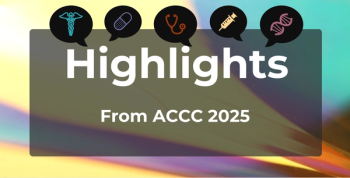
Moving Into the Future of Cancer Care Through OCM 2.0
What would a successor to the Oncology Care Model (OCM) look like? Community oncologists discuss at the Payer Exchange Summit sponsored by the Community Oncology Alliance.
The Oncology Care Model (OCM) from CMS is far from perfect, but for those practices that have made the leap, there’s no going back, according to a pair of leaders from community practices who spoke Monday during the Community Oncology Alliance (COA) Payer Exchange Summit, taking place in Tyson’s Corner, Virginia.
Today, say Kashyap Patel, MD, and Lalan Wilfong, MD, the challenge is building on the investment that leading practices have made and moving value-based care to the next level. In a session led by Bo Gamble, COA’s director of strategic practice initiatives, Patel and Wilfong described COA’s proposal for making it happen: OCM 2.0, a model submitted this summer to the Physician-Focused Payment Model Technical Advisory Committee (PTAC), a federal agency that advises HHS on alternative payment models worthy of testing. PTAC is already seeking comment on the plan.
Patel, president of Carolina Blood and Cancer Care Associates in Rock Hill, South Carolina, and Wilfong, executive vice president for value-based programs at Texas Oncology, discussed how the OCM has fundamentally changed the way practices deliver cancer care, building on the original idea of the Oncology Medical Home, which COA developed in partnership with the American Society of Clinical Oncology. There is considerable speculation about what will happen once the OCM expires in 2021, and the Center for Medicare and Medicaid Innovation has scheduled a “listening session” for November 4 to lay the groundwork for what comes next.
First, Wilfong discussed the standards that are essential to cancer care delivery that must be present in any future model:
- Patient engagement, through comprehensive and timely patient communication
- Evidence-based care, including a detailed treatment plan and survivorship planning
- 24/7 access to care
- Coordinated, team-based care throughout the care journey
- Measures for quality improvement, such as minimization of emergency department visits
- High-quality palliative and end-of-life care
- Chemotherapy safety
Wilfong said practices must take steps to improve the patient experience and quality of life through steps such as avoiding duplicated tests and gathering feedback. On-site reviews and ongoing compliance are essential. He also supports “identifiable, actionable goals” that change over time, so practices continue to improve. “I’m tired of measuring things we are already good at.”
At the same time, Wilfong said, standards such as screening techniques are the duty of the primary care physician. Making sure that future models hold the right physician accountable for the right thing is important, he said, including cases in which a patient with cancer may have multiple comorbidities. “Attribution is the bane of my existence,” Wilfong said.
Finally, he called for taking steps to translate the goals to stakeholders who may not understand them, such as payers or employers. “How do we engage people we haven’t engaged before?” he asked.
Patel warned that the investments in human capital that have been built up across practices due to the OCM will be lost if the model does not continue. During his opening remarks, he described the “ecosystem” that has been created due to the commitment to value-based care, particularly the emphasis on end-of-life care.
Gamble, too, noted the contrast of how far things have come since the OCM began. The key is to move toward more universal standards to make it easier for practices to keep investing in value-based care.
Not long ago, Gamble said, it would have been unthinkable to see practices volunteering to move to 2-sided risk but now they are. “The thought was, ‘Have you bumped your head? This is crazy.’ Now teams are saying, ‘I’m already invested. I’m already transformed.’”
Despite the sense that more practices are prepared for 2-sided risk than once thought, COA is still officially asking CMS for an extension until April 2020 for final decisions, a point that executive director Ted Okon, MBA, repeated during Tuesday’s session.
Newsletter
Stay ahead of policy, cost, and value—subscribe to AJMC for expert insights at the intersection of clinical care and health economics.









































